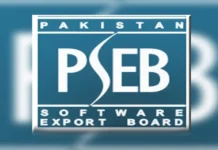Integrated Security is not a static nor a standalone concept. Over the years, sectoral classification of security like social security, economic security and environmental security is rampant and a combination of all is packaged into National Security. However, there is no consensus on precise and practical definition of National Security and what it entails. It depends upon the perspective and the purpose behind such classification and at times purpose is to confuse the discussion rather than reaching at a practical end point. With innovations in technology, each sector or combinations thereof, is leading to integrated security. The need to define this concept is essential because changing routine life in a modern urban society cannot be regulated in silos even within security elements. Integrated security, I will define, is essentially a concept of operations which connects and combines multiple security related services with the participation of specialised units of that sector and related stakeholders for day to day business or for special events.
Let us take example of Police Department in Punjab Province of Pakistan where all police units are integrated under Punjab Police Integrated Command, Control and Communication (PPIC3) Centre. In case of emergencies and natural disasters, civilian and military departments become part of integrated security and rescue operations through this centre. Expression of right of freedom of speech at Mall road, Lahore also causes traffic breakdown at many other locations in the city and rights of far more number of people are affected causing social and economic losses due to diversion, congestions, change of routes and missing meetings and appointments and as minor as picking up their children from schools. Similarly, when a health epidemic like Dengue fever is prevalent, there is also need of ensuring that panic is not created and health system function well by treatment, awareness raising and ensuring timely supply of medicine as well as preventing any demonstrations against the government on busy roads of the cities. These multidiscipline functions are performed with greater role of law enforcement mechanism. It is not only the enforcement mechanism which is required to assist the administration but capability of this mechanism also needs to match the requirements of rapidly growing urban areas in Pakistan.
In the absence of such capability, it is becoming difficult to manage mega cities like Karachi, Rawalpindi or Faisalabad in Pakistan. Law Enforcement Agencies (LEAs) are unable to fight crime without sharing of information among various units of the Police in and with other provinces. LEAs are also at loss to provide every day services to citizens like getting reports such as lost and found items which may be routine matter in a city of more than one million people anywhere in the world.
Once the solution was tried by developing smart applications for citizens for one purpose or the other. Limitation of many applications is evident from the fact that these applications are at the most, a reporting or a mechanism by users and they often lack collection, collation, analysis of the data. They just display data in more colorful forms on electronic screens. In addition, there is lack of response mechanism on the basis of these reports or information. If these applications are popular then, without continuous support and expenditure, it is difficult to meet expectations and service delivery demands of the end users.
Must Read: Celebrate this Eid with Infinix #DoubleAmazingOffer!
Integrated Command, Control and Communication (PPIC3) Centres of Punjab Police are an example of developing integrated security leading to smart security in Pakistan. In these Centres, emergency response services by Police, rescue 1122 services and firefighting services are under a single dialing number of 15. Anybody in Lahore may call this number and appropriate response shall be given through a single window under integrated call centre. This is integration of all emergency services by Police in collaboration with other service providers.
Another feature of these PPIC3 Centres, is integration of intelligent traffic management systems from management of traffic signals to issuance of E-Tickets dispatched to the house address of the vehicle owners for violation of red lights while driving on the roads. It is first time happening in Pakistan. All traffic related information is also provided to the callers who contact Police at 15. A radio Safe City is also part of this service which provides live information about traffic situations working at Frequency of FM 88.6 within Lahore.
Third element is integration of counter terrorism measures which are much sophisticated for investigation purposes than public services as mentioned earlier. Latest technology like facial recognition system and Automated Number plate recognition are integrated in this system to provide multiple tracking options to LEAs for prevention of crime as well as for post event investigations.
The sensors used to collect information about above purposes also provide data about road conditions, encroachments, electricity poles, dangerously intertwined electric cables, open sewerage lines, manholes and people crossing the roads where no zebra crossing are marked. This data can be exploited by relevant public agencies through a well-defined method of sharing to rectify most of the issues which a common person faces on day to day basis. So, security sensors can also be used for real time monitoring, verification and quality assurance of performance of many other service providers. These other departments can use it as an accountability mechanism to even mark attendance of their field staff without any field visit and can also assess their performance while sitting in control rooms. Many of these actions also contribute to improvement in security environment in the city. There is no need to develop separate systems in silos for monitoring the same which can be viewed in a shared facility developed by Punjab Safe Cities Authority.
Data generated in such centers shall be a goldmine for academics. Indigenous research and development on technical and public policy subjects is also in progress. Punjab Safe Cities Authority (PSCA) is working with UET Lahore, LUMS and Harvard University to use data on exciting issues like traffic management, public perception about public services, access to public response time and other topics. These diverse topics were mutually exclusive some time ago but with integration of systems it is possible to explore innovative ideas and solutions to complex problems of today’s urban centers. This combination of practice and theory will open new opportunities and offer new solutions for urban problems.
PPIC3 Centre at Lahore is more than just a tool to control crime as it embodies concept of integrated security to make a Lahore a smart city and then many other cities in Pakistan. Many international agencies and friendly countries like China, USA, UK, Turkey and UAE are inspired by this concept and are trying to follow this trend which is started by Pakistan. Development of safe and smart cities systems are need of the time through integrated security.




